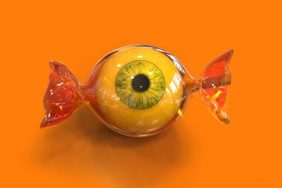Photo: Courtesy of the Kermit the Frog Meme Bank
Could you ever imagine that the spam emails you have received would one day be archived by the Library of Congress in its efforts to preserve the “folk expression on the web,” in a new database that users can peruse at their leisure? In the words of Biggie Smalls, “Things done changed.”
Also: Meet “Inspirobot,” the Madcap A.I. Mememaker
Last month, the Library of Congress launched the Web Cultures Web Archive and the Webcomics Web Archive, searchable databases that include everything from the Urban Dictionary, Boing Boing, and Emojipedia to Giphy, Cute Overload! ;), and the Meme Generator.

A page of entries from the meme database KnowYourMeme.com. Courtesy of the Library of Congress.
The Library of Congress first began archiving web content in 2000 as part of the American Folklife Center, which was established in the 1970s to preserve ethnographic materials like oral histories and songs that might otherwise disappear. Over the past two decades, the Web Archives grew in vast scope, as the nation channeled its creative energies into the creation and dissemination of digital content. And like the oral content of yesteryear, these memes, gifs, and emojis might otherwise disappear if it were not for the historically-minded people at the Folklore Center.
“Why is this important?” asks Nicole Saylor, head of archives at the American Folklife Center of the Library of Congress, in a blog post for the site. “Increasingly, people take to their smart phones, tablets and laptops to enact much of their lives through creative communication, making the web a predominant place to share folklore. It is where a significant portion of the historical record is now being written.”
Expanding on this, Ryan A. Milner adds in an interview with Whitney Philips, “Basically, what’s happening on the internet—all the situated vernacular, all the creative expression, all the remix, all the slang; every in-joke and hashtag and portmanteau—is folklore; it’s exactly the sort of traditional expression (that is to say, expression that communicates traditional cultural elements, i.e. passes traditions along) that folklorists have focused on for over a century.”
Or, more plainly, as the Internet might say: “It Me.”
Digital culture is a record of how we communicate as well as how we think, revealing the increasing interplay between sight, sound, motion, image, and text. As the boundaries between oral and written speech, and visual culture dissolve in this new realm, communication is being driven by the masses, from the bottom to the top—rather than the reverse.
Corporations are quick to hire new graduates raised in this medium to drive their social media accounts and speak with a new generation in colloquialisms that they use amongst each other. The result is a massive shift that is still taking place, one that will reveal itself in the long view, when no one alive remembers what it was like before emojis existed.
And when that time comes, the Library of Congress will be there, ready, willing, and able to provide a new crop of historians with not only the meaning of the word “plug” but evidence of how it works.
Miss Rosen is a journalist covering art, photography, culture, and books. Her byline has appeared in L’Uomo Vogue, Vogue Online, The Undefeated, Dazed Digital, Aperture Online, and Feature Shoot. Follow her on Twitter @Miss_Rosen.








